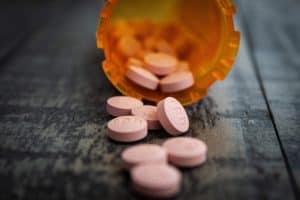GP prescribing costs contained in ’06
pharmafile | May 15, 2007 | News story | Sales and Marketing |
Pharma revenues from primary care prescribing in England edged up three per cent in 2006, with fewer GP-led product launches and cost containment measures suppressing growth.
Newly released data from the Department of Health show England's primary care prescribing rose to a total of £8.19 billion, with spending on diabetes products proving to be one of the few fast-growing areas.
The statistics will be welcomed by NHS strategic health authorities and PCTs which have been increasingly vigilant in containing costs wherever possible – but they will be bad news for primary care salesforces, many of which face sluggish growth.
The growth is even less impressive if the seven per cent price cuts enforced in 2005 are factored into calculations, which saw overall revenues drop slightly. The 2006 figures are 1.5% higher than in 2004, before the price cuts.
The most high-profile drug to suffer in 2006 was undoubtedly Pfizer's flagship brand Lipitor. The cholesterol-lowering drug is the biggest selling drug in the UK and globally, but it became an obvious target for health service managers looking to cap spending on prescribing.
NICE guidance published in January 2006 recommended a large increase in the numbers of patients who should receive statin therapy – but also said cheaper generics (simvastatin in most cases) should be prescribed in most cases.
SHAs and PCTs also pushed strongly for existing patients on Lipitor to be switched to generic simvastatin wherever possible, a strategy employed far more widely in 2006 than it had ever been before.
Consequently, sales of Lipitor remained virtually static at £400 million. In sharp contrast, rival cholesterol drugs AstraZeneca's Crestor and Schering-Plough/ Merck's Ezetrol and Inegy were two of the fastest growing brands. Ezetrol grew 60%, while Crestor grew 24%, but their total sales are just a fraction of Lipitor's, and have not attracted the same cost-containment scrutiny as the top seller.
One of the fastest growing therapy areas in 2006 was diabetes, where Sanofi Aventis's Lantus (with sales up 19% to £44 million) and GSK's Avandia franchise led the surge in sales.
Audited figures from IMS Health provide a more comprehensive picture of the whole UK. The data show the overall primary care market rose 3.2% to $15.7 billion, while hospital sales grew at 7.3% to $4.9 billion.
Total sales in many regions of the country actually fell, most notably in Scotland, where IMS recorded a 4.3% fall in spending, a figure largely due to greater generic prescribing.
Meanwhile, the long-term future of the UK market and its pricing is hanging in the balance, as the government ponders recent advice to scrap the existing PPRS pricing system.
The industry has made it clear it opposes such a move, and there are some encouraging signs that the government will not follow the recommendations, although no details have yet been decided.
IMS Health forecasts that growth will rise to 5-6% in 2007, as the effects of the PPRS price cuts come to an end.








